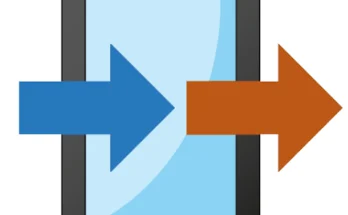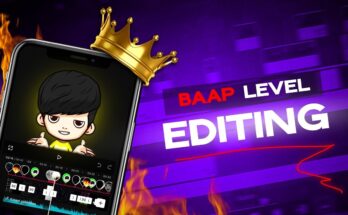3D Animation Video Editing: A Comprehensive Guide
In the ever-evolving world of digital content creation, 3D animation has emerged as a powerful tool for visual storytelling. From movies and video games to advertisements and virtual reality experiences, 3D animation provides creators with the ability to design stunning visuals that engage and captivate audiences. However, the process doesn’t end with creating the 3D models and animations. The art of 3D animation video editing is equally important in bringing everything together and ensuring that the final product is polished and engaging.
This article will dive deep into the world of 3D animation video editing, covering its key aspects, tools, and best practices that make the entire process seamless and effective. Whether you’re a beginner or an experienced animator, understanding video editing in the context of 3D animation will significantly improve the quality of your work.
What Is 3D Animation Video Editing?
Before delving into the technicalities, it’s essential to understand what 3D animation video editing is. Essentially, it involves the process of refining and enhancing animated footage that has been created using 3D software. This process includes tasks such as assembling scenes, trimming clips, adding visual effects, color grading, syncing audio, and ensuring smooth transitions between shots. The goal of video editing is to shape the raw animation into a cohesive story that communicates the intended message or emotion to the audience.
3D animation video editing often goes beyond traditional video editing techniques. In the case of animated footage, editors have to work with not just video but also the timing of movements, camera angles, and other specific elements inherent to 3D animation. As a result, the editing process is more involved, requiring specialized skills and tools.
Key Stages in 3D Animation Video Editing
The process of editing 3D animation typically follows several stages. Let’s break them down to better understand the flow of the process:
1. Pre-Editing Phase: Planning the Animation
Before diving into editing, there is an essential stage of planning and organizing. This includes:
- Storyboarding: A storyboard is a visual representation of the sequence of events in an animation. It allows the editor to have a roadmap of how the animation will unfold and what the final result will look like. It helps the editor identify key scenes and sequences that will need special attention.
- Scriptwriting & Audio Planning: Animation is often driven by a script, which outlines the dialogues, sound effects, and music. A well-planned audio track is crucial to maintaining the timing of the animation and ensuring proper synchronization with visuals.
- Setting Up the Editing Workspace: Organizing the assets, such as 3D models, textures, and animation sequences, into a usable format for editing is key to efficient workflow. At this stage, the editor prepares the project by sorting the files, setting up a timeline, and checking the technical requirements of the project.
2. Importing the 3D Animation Footage
Once the animation has been created, the next step is importing the raw footage into the video editing software. The 3D animation may come in the form of rendered video files or sequences of frames that need to be assembled into a continuous video.
At this point, it’s essential to ensure that the imported files are in the correct format and resolution. Common 3D animation file formats include:
- .fbx (Filmbox): Used for exchanging animation and model data between software.
- .obj (Object): A widely-used file format for storing 3D models.
- .abc (Alembic): A format used for handling large amounts of animation data in visual effects.
- .mov/.mp4: Standard video file formats after rendering.
The video editing software will depend on the complexity of the project and the tools needed. Popular video editing software for 3D animation editing includes Adobe Premiere Pro, Final Cut Pro, DaVinci Resolve, and industry-specific programs like Avid Media Composer.
3. Assembling the Sequence
Once the raw animation footage is imported, the editor can begin assembling the sequence. This is where the storytelling aspect of animation really takes shape. The editor arranges the clips according to the storyboard, ensuring that the pacing is consistent and that the animation transitions smoothly from one scene to the next.
At this stage, you will also:
- Trim unnecessary or redundant sections.
- Adjust the timing of animated sequences to match the audio.
- Experiment with different camera angles, zooms, and pans to add dynamism to the animation.
4. Refining the Visuals
3D animations often involve complex details, such as lighting, shading, and textures, which need to be refined during the editing phase. Some aspects that need attention during this phase include:
- Color Grading: Proper color grading enhances the mood and tone of the animation. Editors use color grading tools to adjust brightness, contrast, saturation, and hue to match the animation’s desired style. For example, a darker, cooler palette may be used for a moody, dramatic scene, while a warmer palette may work for a more vibrant, energetic feel.
- Special Effects (VFX): Visual effects, such as explosions, particle effects, and background animations, are often added during the editing phase. These effects enhance the realism of the animation or elevate the spectacle of the scene.
- Smooth Transitions: Transitions between shots and scenes can be enhanced with smooth fade-ins, fade-outs, or specialized transitions to maintain the viewer’s interest and create a seamless viewing experience.
5. Audio Syncing
In 3D animation, audio is as important as visuals. Sound effects, music, and voiceovers must be carefully synchronized with the animation. This process involves:
- Voiceover Editing: Ensuring that the characters’ dialogues align with their lip movements or facial expressions.
- Adding Sound Effects: 3D animated projects often require sound effects that enhance actions or reactions, such as footsteps, explosions, or background ambiance.
- Background Music: Music plays a crucial role in setting the tone for scenes. It is important to edit the music tracks to match the animation’s rhythm and pacing.
6. Rendering the Final Output
After fine-tuning the animation and making sure everything flows together well, the final step is rendering the project. Rendering is the process of producing the final video output after all the elements (animation, audio, VFX, etc.) have been combined. This can take considerable time, especially for high-resolution animations.
Editing software allows editors to export the animation in various formats depending on the intended platform for release, such as:
- High-definition formats (HD, 4K) for cinematic releases.
- Web-optimized formats (e.g., MP4) for online content.
- Virtual reality formats for immersive experiences.
Tools and Software for 3D Animation Video Editing
Several professional tools are available to aid in the 3D animation video editing process. Some of the most widely used include:
1. Adobe Premiere Pro
Adobe Premiere Pro is one of the most popular video editing software solutions for professionals. It offers powerful tools for editing video footage, audio syncing, and integrating VFX. Its integration with other Adobe tools, such as After Effects and Photoshop, makes it an excellent choice for 3D animation editors.
2. DaVinci Resolve
DaVinci Resolve is another highly recommended tool for 3D animation video editing. Known for its advanced color grading capabilities, DaVinci Resolve also provides robust editing and visual effects tools. The free version is highly functional, making it ideal for beginners and professionals alike.
3. Final Cut Pro
Final Cut Pro is a professional video editing software that offers powerful tools for creating high-quality animations and seamless video transitions. It is exclusive to macOS, making it an attractive choice for Mac users working on 3D animation projects.
4. Blender
Blender is a free and open-source 3D creation suite that combines 3D modeling, animation, and video editing in a single software. While primarily used for creating 3D models and animations, Blender’s built-in video sequence editor also makes it an ideal tool for editing animated footage.
5. Autodesk Maya
Autodesk Maya is another powerful tool commonly used in the professional animation industry. It is primarily used for modeling and animating 3D characters and scenes but also offers some video editing and rendering features for seamless post-production work.
Best Practices for 3D Animation Video Editing
To create polished, professional-quality 3D animations, there are several best practices to keep in mind during the video editing process:
- Ensure Proper Continuity: Make sure there are no jarring visual or narrative jumps between scenes. The flow of the animation should be smooth and logical.
- Focus on Timing: Timing is crucial in animation. Ensure that the actions in the animation match the intended pacing and sync correctly with the audio.
- Use Effective Visual Effects: While visual effects can add drama and excitement, they should not overpower the core animation. Use them judiciously to enhance the story, not distract from it.
- Optimize for Your Medium: Whether you’re creating a video for the web, a film, or a game, tailor your video editing choices to the platform where it will be viewed. For example, animations for mobile devices might require different resolutions and file formats compared to
In summary, 3D animation video editing is a vital part of the animation production process. It requires creativity, attention to detail, and proficiency with various tools to bring a vision to life. By understanding the key stages involved, selecting the right software, and following best practices, you can create compelling, high-quality animations that captivate your audience. Whether you’re a novice animator or an experienced professional, mastering the art of video editing in 3D animation can significantly enhance the impact of your work.


